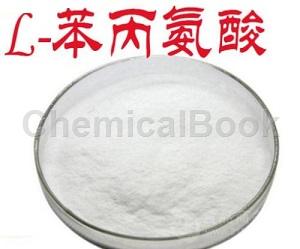L-Phenylalanine is an optically active aromatic amino acid and one of the essential amino acids for the human body. It is also an important pharmaceutical and food chemical intermediate. In the food industry, L-phenylalanine is mainly used in sweeteners, flavorings and health products. L-phenylalanine and L-aspartic acid are condensed to form Aspartame (APM), which is about 200 times sweeter than sucrose, has low calorific value and is easily metabolized in the body, so it is suitable for obese patients and For diabetic patients. In recent years, the application of L-phenylalanine in the medical field has attracted more and more attention. L-phenylalanine prevents and treats osteoporosis drugs, heterocyclic dipeptide drugs that promote hormone release, thrombin inhibitors and endopeptidase inhibitors, and cardiovascular drugs.

Market prospects
Currently, the global annual demand for L-phenylalanine is approximately 38,000 tons, and is increasing year by year. The United States is the main consumer country, with annual consumption of more than 20,000 tons, accounting for about half of the world’s demand. L-phenylalanine is mainly used to synthesize the low-calorie, high-sweetness sweetener aspartame. The annual demand is about 18,000 tons, with an average annual growth rate of 10%-15%; on the other hand, L-phenylalanine The annual consumption of phenylalanine in the pharmaceutical industry is 7,000 tons, which has huge market application space.
Technical features
L-Tyrosine is widely used in medicine and chemistry. L-tyrosine is a precursor to many important secondary metabolites and an important precursor to the Parkinson’s disease drug 3,4-dihydroxy-L-phenylalanine (L-DOPA). Due to its long biosynthetic pathway and complex regulation, the use of microorganisms to produce L-tyrosine still faces many challenges.

 微信扫一扫打赏
微信扫一扫打赏

